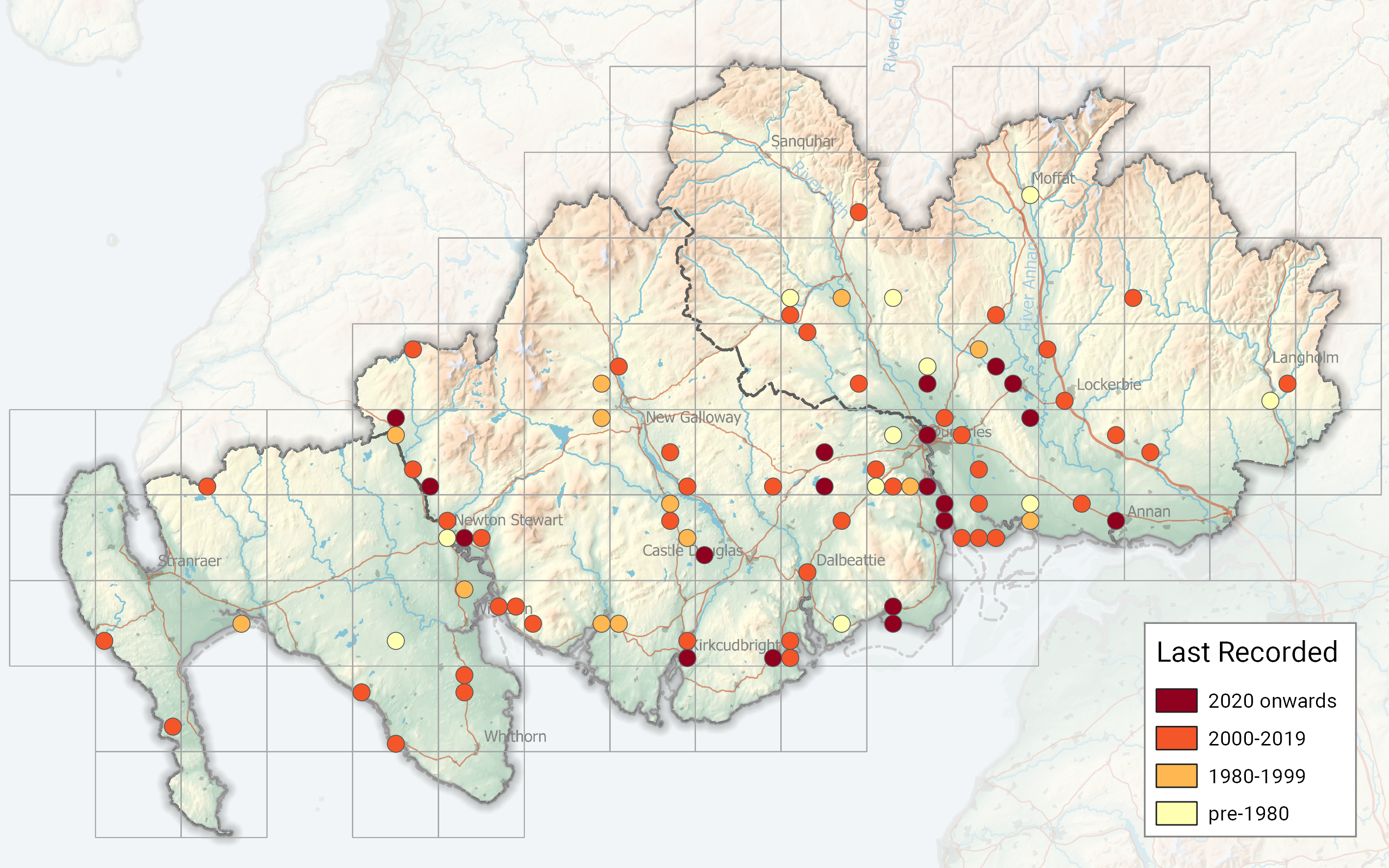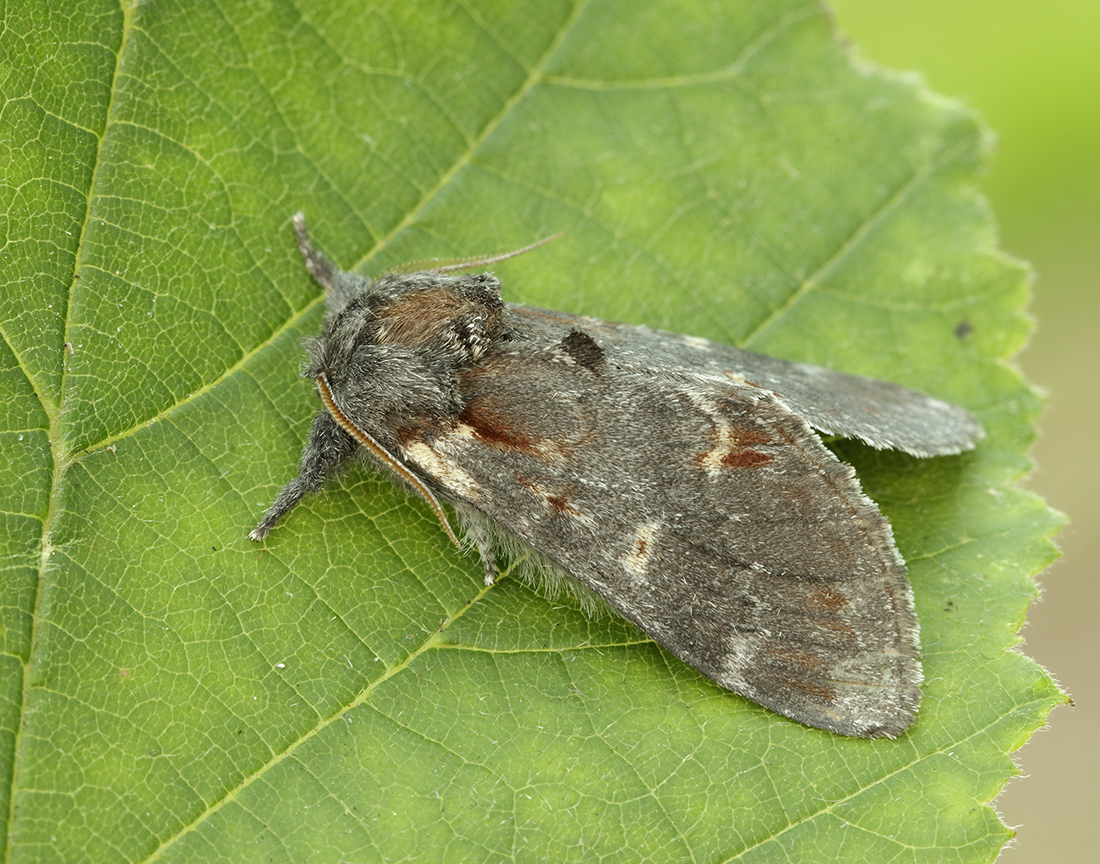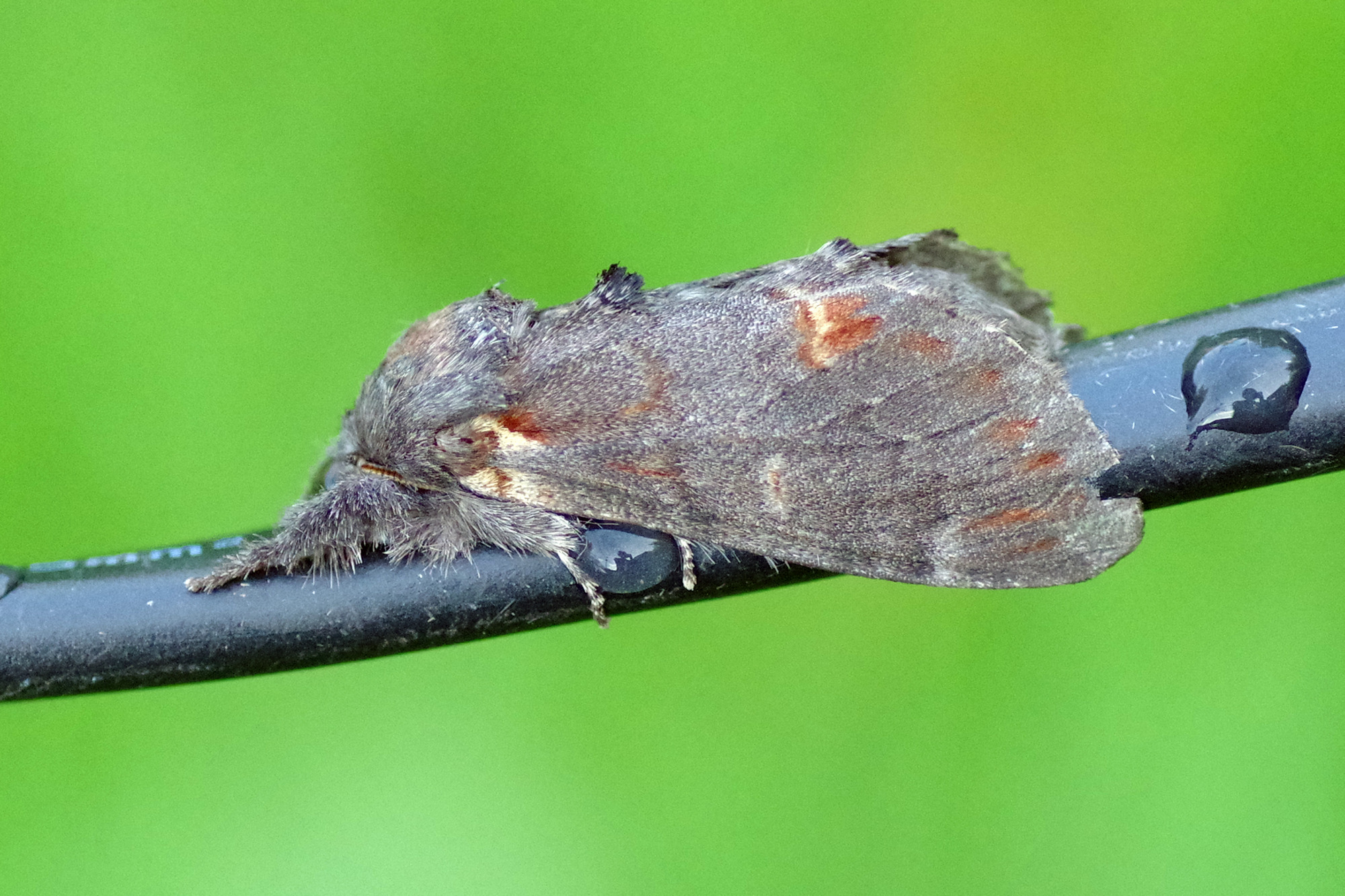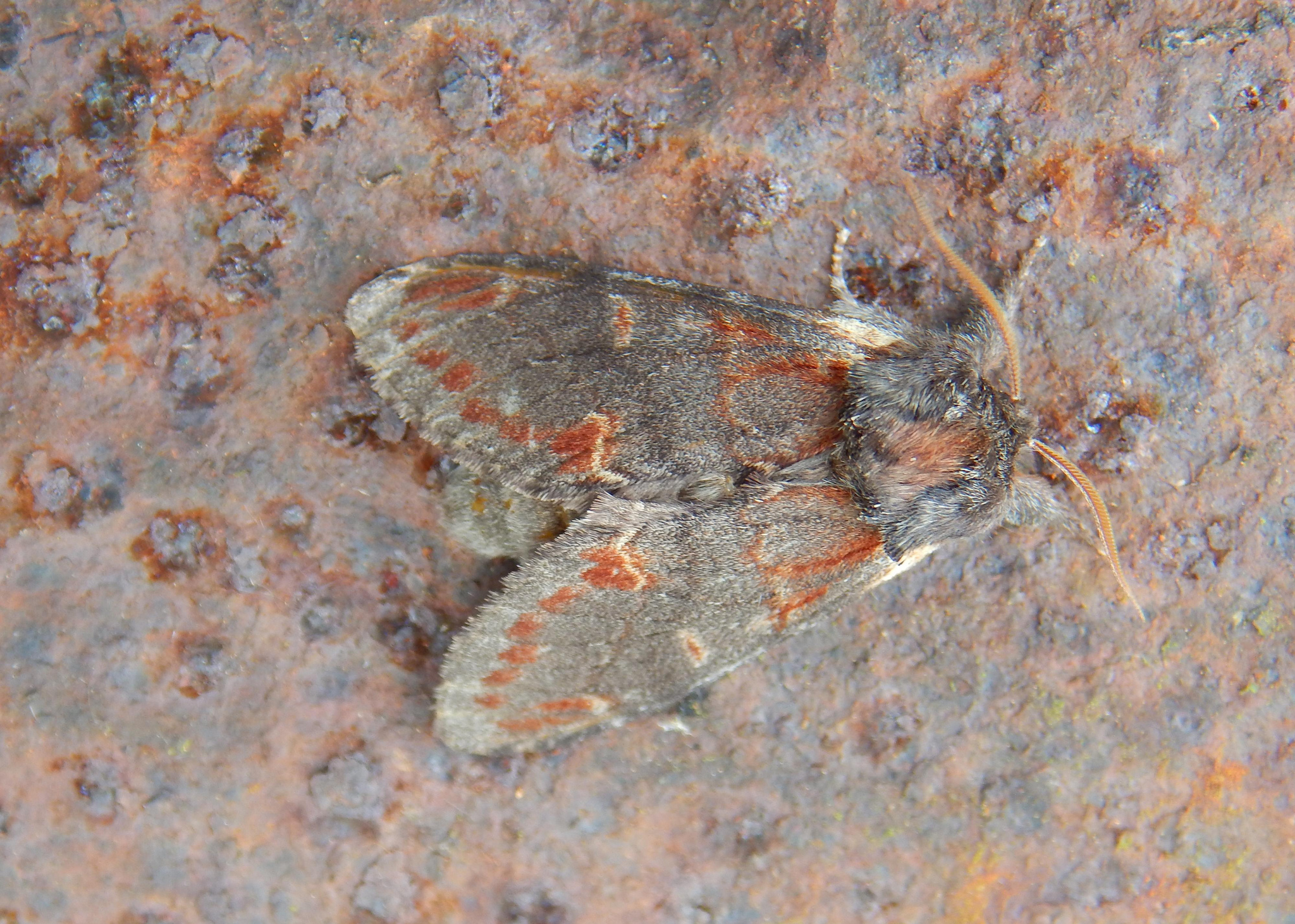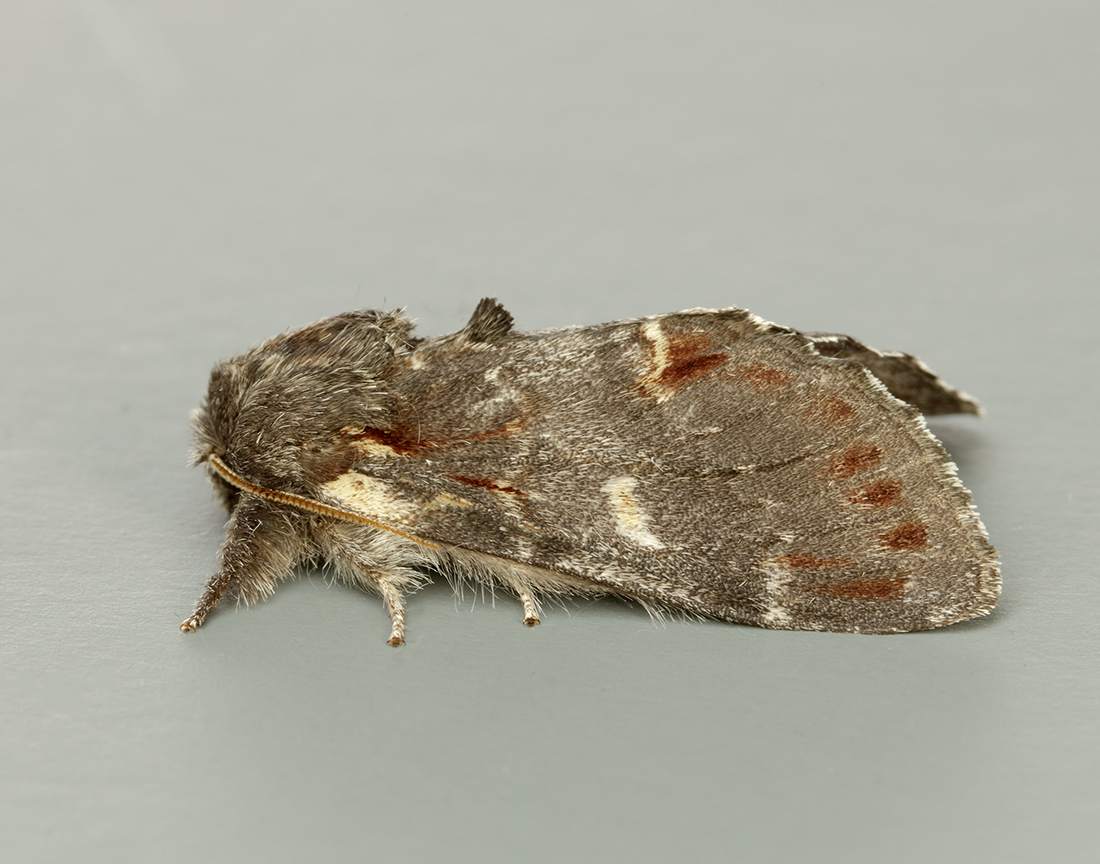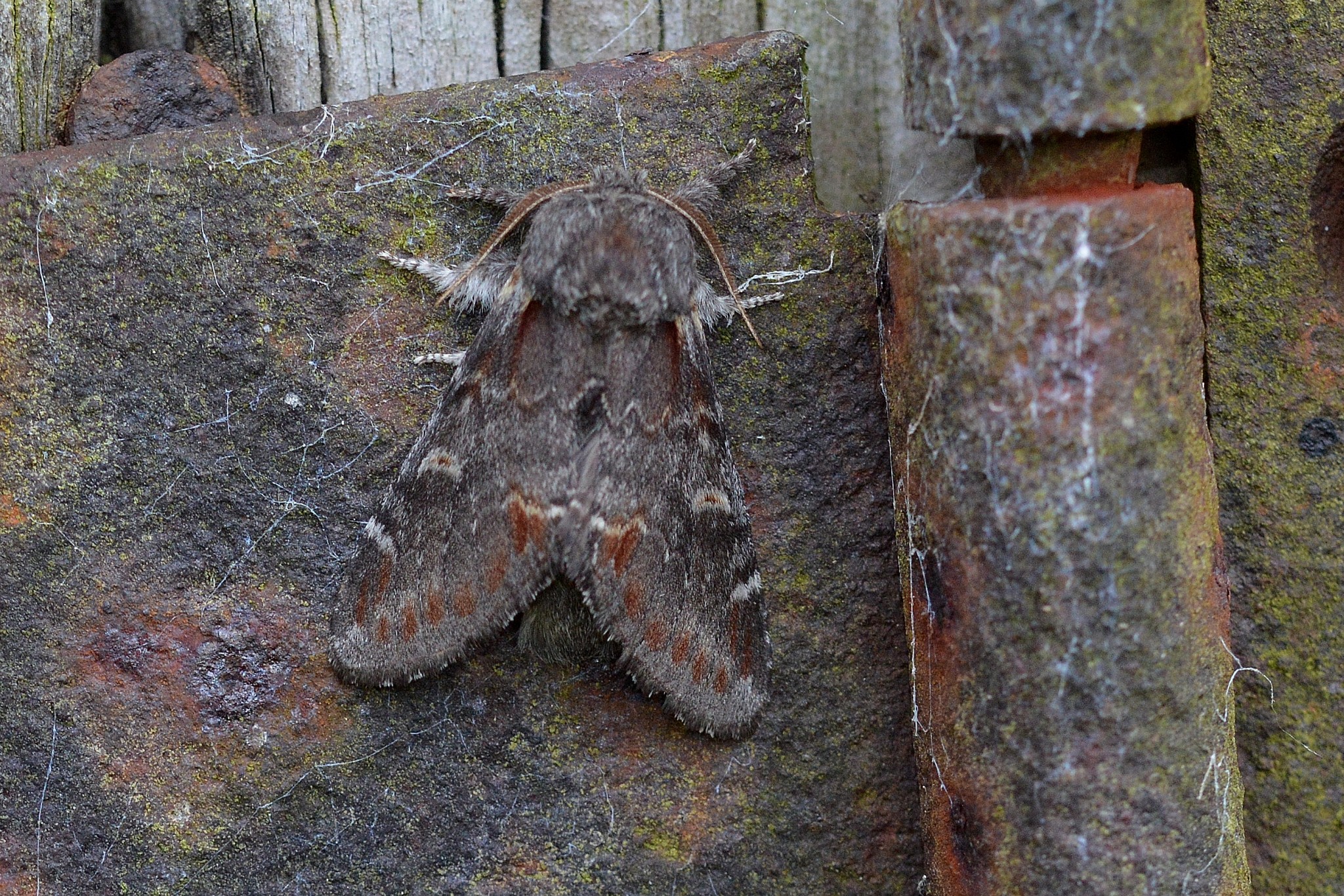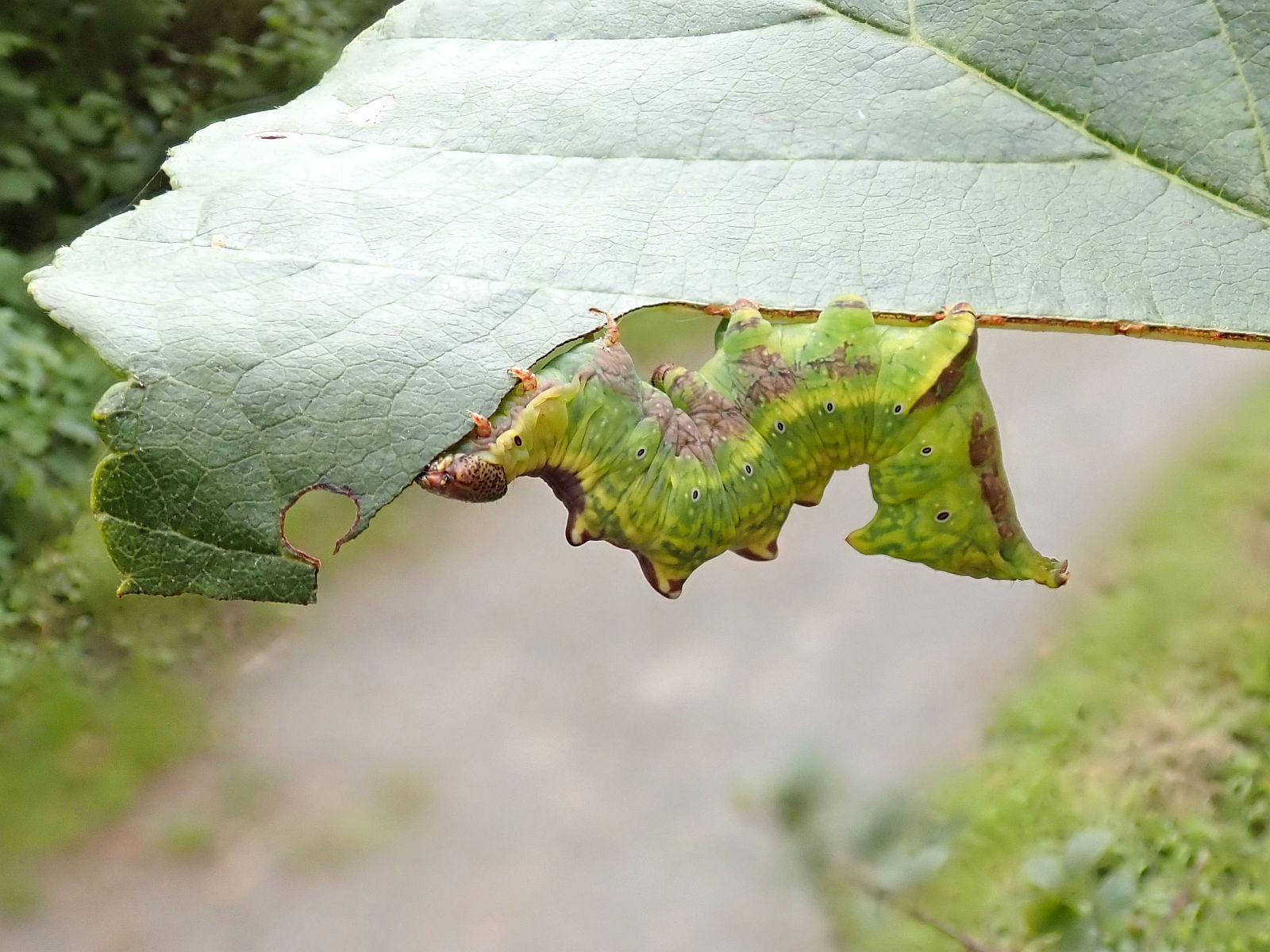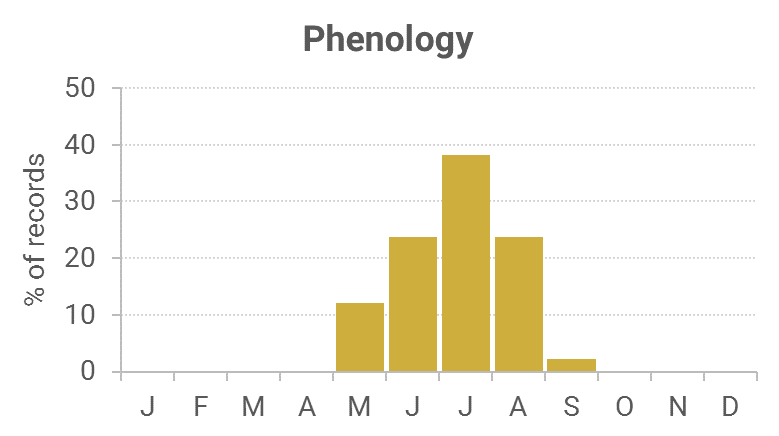Identification
Distinctive with dark grey forewings and reddish brown streaks near the base and in the outer half..
Recording Method
Comes to light.
Life cycle
Two generations, but overlapping. Overwinters as a pupa underground in a slight cocoon. Larvae are present June to July, again, September.
Larval foodplants
Birches and Alder.
Habitat
Broadleaved woodland and others places where the larval foodplants of birches and Alder are found.
History
On a visit to the Moffat area in August 1858, Alexander Somerville of Glasgow, had found the larvae on birch. Lennon (1860) stated that he had bred ten on, presumably from larvae collected from around Dumfries where he regularly walked, and by 1863 had recorded it from Kirkconnell, Comlongan (VC72) and Lochaber in the Mabie Forest (VC73). Buchanan White of Perth (1895) listed it as occurring in Colvend and Southwick parishes (VC73). R. S. Gordon (1913) had found that the larvae were not uncommon on young birch and alder in Wigtownshire.
Sir Arthur Duncan (1909-84) during his lifetime had found it at Closeburn, Tynron and Castlehill, Dumfries (all VC72). A handful of records were received during the early 1970s, but when the Rothamsted stations were used during 1976-85, fifteen records were amassed. During 1982-84 the Hensol Estate also housed the Iron Prominent.
It was 1993 before it was recorded again, being found at Kirkton. Of the 17 records during the 1990s, two were from Wigtownshire, with the rest in VCs 72 and 73.
The first decade of the 21st century saw an upsurge in records, probably due to more observer coverage, but only four from Wigtownshire, with the rest equally divided between VC72 and VC73.

